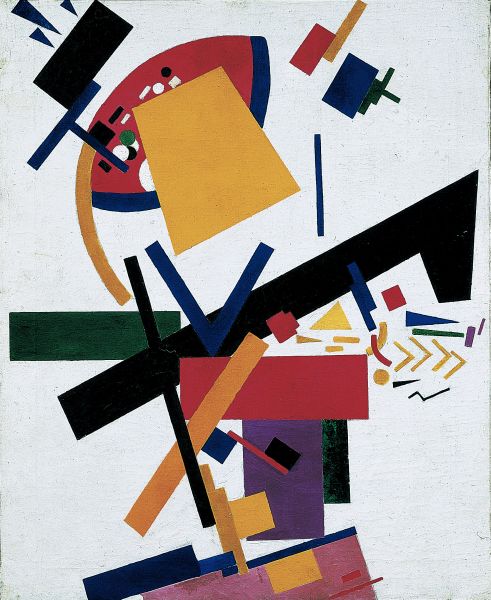|
|
Suprcmatismo. 1915

Malevich Kazimir,
Óleo sobre lienzo
87,5 х 72
Museo Estatal de Arte Ruso, San Petersburgo
Пост.: 1926 из МХК, Ленинград
Descripción
Malevieh colocó el cuadro Suprematismo por debajo y ligeramente a la derecha de su Cuadrado negro en la exposición 0.10 to, que se celebró en Petrogrado en 1915 y en la que el artista mostró por primera vez al público su lenguaje suprematista absolutamente innovador. Esta dinámica obra, repleta de masas de diferentes formas y colores, contrasta fuertemente con el minimalismo del Cuadrado negro y pone de manifiesto que, desde su concepción, el lenguaje visual del Suprematismo no era tan reductivo como se cree. Este cuadro, que se expuso originalmente con el título de Masas pictóricas en movimiento, suprematismo, demuestra que Malevieh entendía las formas de manera abstracta y manipulaba sus formas y colores con el fin de crear un efecto de movimiento sobre un fondo blanco aparentemente neutro que, de hecho, estaba cargado de simbolismo. Para Malevieh, el fondo blanco significaba el espacio cósmico infinito.
Biografía del autor
Malevich Kazimir
Malevich, Kazimir Severinovich (1878, Kiev - 1935, Leningrad)
Painter, graphic artist, writer on art, portraitist, landscapist, abstractionist. Studied at the Kiev School of Art (1895-1896) and Fyodor Roehrberg's studio in Moscow (1906-1910). Contributed to exhibitions (from 1905). Contributed to the exhibitions of the Moscow Fellowship of Artists (from 1907), Donkey's Tail (1912), Target (1913), Der Blaue Reiter (1912), Salon des Independants (1914), Tramcar V. First Futurist Exhibition (1915) and 0,10. Last Futurist Exhibition (1915-1916). Designed the sets and costumes for the Futurist opera "Victory Over the Sun" (1913). Member of the Union of Youth (1910) and Jack of Diamonds (1910, 1916). Founded the AFFIRMES OF THE NEW ARTgroup (1920). Worked for Department of An People's Commissariat of Education (1918-1919). Director of the Museum/Institute of Artistic Culture in Petrograd/Leningrad (1923-1926).

